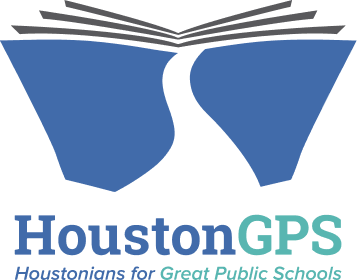HISD Board Goals
The Houston ISD Board of Managers is currently in the process of setting their five-year goals and constraints for the district. We wanted to follow up from our public comments on the proposed board goals and constraints with additional detail and recommendations following the workshops on October 19 and November 2. The board is currently posted to consider this on November 9.
We appreciate the board of managers for engaging in a robust goal and constraint setting process. Overall, we believe the proposed goals presented were ambitious and appropriately student focused. Below are specific recommendations that we believe will strengthen the goals and ultimately better support HISD students.
Goal 1: Model 2 of the individual student group targets not only recognizes the reality of large-scale systemic changes by delaying large outcome gain expectations, but also approaches student populations equitably by setting student group targets to actively close achievement gaps.
We recommend pursuing this model, however, would suggest adjusting the first few targets for each group to be more ambitious. We recognize the challenge in wholescale reform but believe the goals should be rigorous and demonstrate progress, even while recognizing the larger impact will follow later. Given the focus of reform on NES/A schools, we would also suggest a goal progress measure that focuses specifically on student performance on those campuses.
Goal 2: We want to highlight that based on our review of historical data statewide, the 15 percentage point gain in this goal is notably appropriate and ambitious. This is a strong goal that recognizes the significant room to grow in math post-pandemic.
For the same reasons as outlined above for Goal 1, we recommend adopting Model 2 for the student group targets, increasing the rigor of the first few targets for each group, and tracking NES/A performance using a goal progress measure.
Goal 3: We strongly encourage the board to consider focusing this goal on the CCMR Outcomes Bonus criteria rather than the formula outlined in the A-F accountability rating system. We fully support the accountability system, but the CCMR Outcomes Bonus criteria is a more rigorous goal that better supports student postsecondary success. While the point of the goal is to focus on student outcomes, the additional funding that is tied to meeting Outcomes Bonus criteria can help support CTE programming and advanced courses.
It is worth noting that focusing on CCMR Outcomes Bonus does not detract from accountability. Students who meet Outcomes Bonus criteria should also have already met accountability criteria. TEA has a resource that highlights the differences in the criteria to provide additional context and here is a deeper dive on the CCMR Outcomes Bonus.
Goal 4: We appreciate the focus on exit criteria in the goals and constraints. Because the A-F accountability refresh is still pending, we wanted to provide some information about the different potential calculations of Domain 2, just in case it can aid in board discussions. Here is the 2022 methodology and here the background on the 2023 refresh that is still pending.
Goal 5: Again, we appreciate the focus on exit criteria but are concerned that the calculations of this goal will be difficult for the public to follow given the changes in populations at D/F rated campuses from year to year as the reforms work to boost student outcomes. In line with our recommendation, the board reached a consensus on November 2 to remove this goal.
Constraints:
We believe the constraints are an appropriate place to fully monitor the intervention exit criteria. We look forward to seeing robust progress measures to match the constraints outlined for D/F-rated campuses and special education. We especially want to stress the importance of compliance and strong communication channels with parents of students being served in special education.
On November 2, a suggestion was made at the dias to include a constraint focused on high-quality pre-K availability. We support this inclusion and suggest including a means of defining “high-quality.” Some research-backed options include the Full Day High-Quality Pre-K Components defined by Texas statute and TEA regulation or Quality Standards Benchmarks outlined by the National Institute for Early Education Research.
We also recommend a board self-constraint focused on the last exit criteria: “board procedures and conduct that meet a focus on students consistent with high performing governance teams.” This constraint could be used to codify the use of the Lone Star Governance rubric and self-assessment process as a public means of monitoring this exit criteria.
